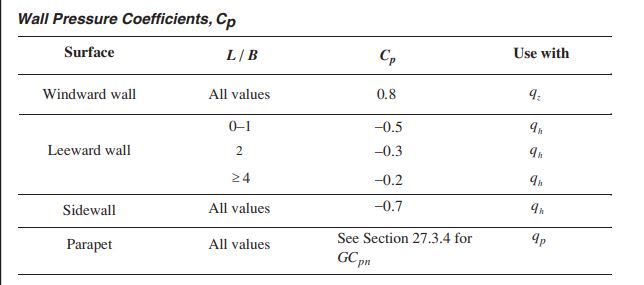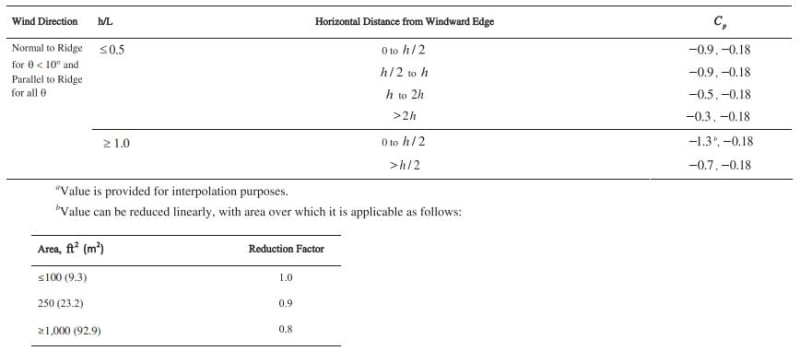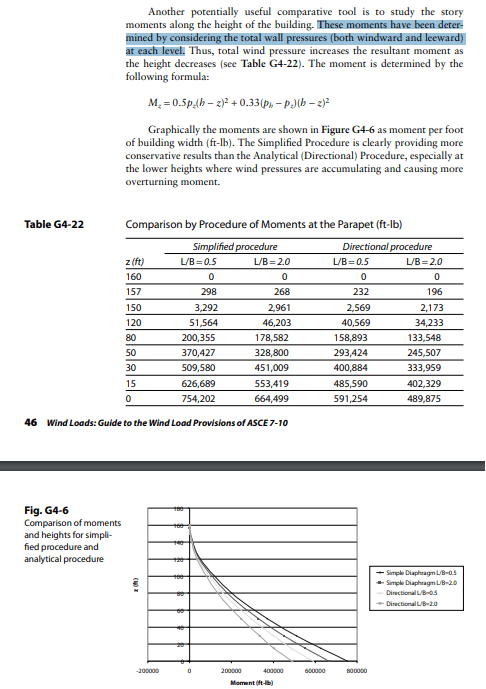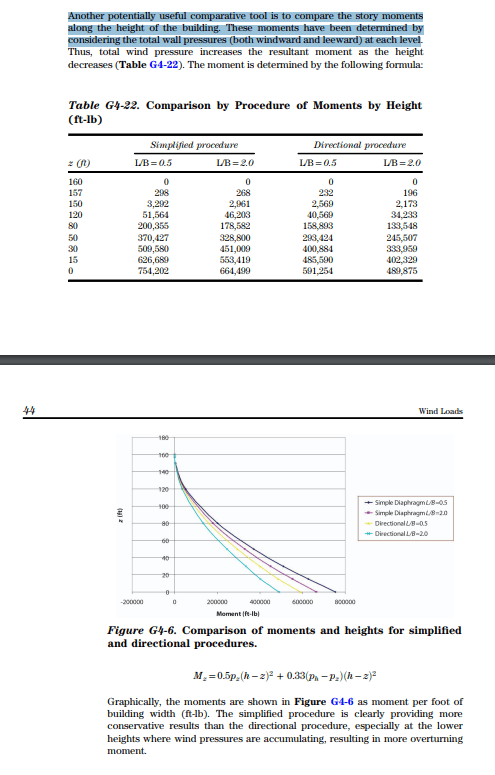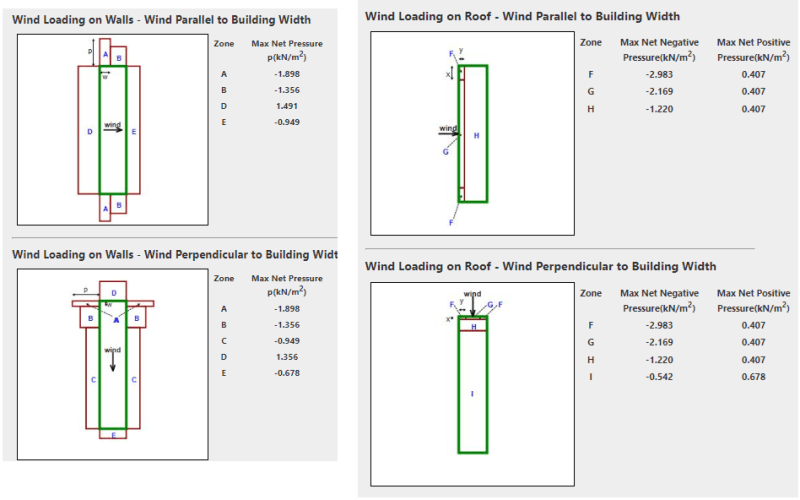OffshoreWindStructures
Structural
Hi,
I wanted to get some outside opinions on how much suction forces on roofs due to wind contributes to OTM for small modules or shipping containers,
Wind load on containers produces pressure on the windward face and suction on the leeward face and roof. There's a discussion on whether or not to include the roof suction loads (pink in sketch) in the total overturning moment.
I've sketched a picture of the forces and points of application as i understand it. Others in the office don't think it's worthwhile taking the roof suction loads (in pink) into consideration when considering overturning moments from wind and righting moments from self weight about point B.
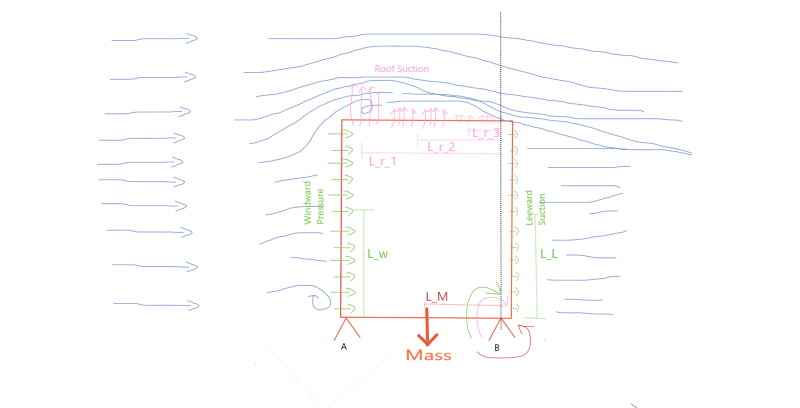
An additional question is on net coefficients for overall non-cladding loads for foundation checks such as this. Uk/Eurocode guidance suggests a net lateral wind coefficient of 1.2 to 1.3 (i.e. 0.8 for windward pressure and 0.5 leeward suction but does not provide a net overall coefficient for roofs.
Do you use overall net coefficients for the roof suction (or assume a triangular load distribution) or do you go through each of the individual roof zone suction contributions to OTM?
I wanted to get some outside opinions on how much suction forces on roofs due to wind contributes to OTM for small modules or shipping containers,
Wind load on containers produces pressure on the windward face and suction on the leeward face and roof. There's a discussion on whether or not to include the roof suction loads (pink in sketch) in the total overturning moment.
I've sketched a picture of the forces and points of application as i understand it. Others in the office don't think it's worthwhile taking the roof suction loads (in pink) into consideration when considering overturning moments from wind and righting moments from self weight about point B.

An additional question is on net coefficients for overall non-cladding loads for foundation checks such as this. Uk/Eurocode guidance suggests a net lateral wind coefficient of 1.2 to 1.3 (i.e. 0.8 for windward pressure and 0.5 leeward suction but does not provide a net overall coefficient for roofs.
Do you use overall net coefficients for the roof suction (or assume a triangular load distribution) or do you go through each of the individual roof zone suction contributions to OTM?

